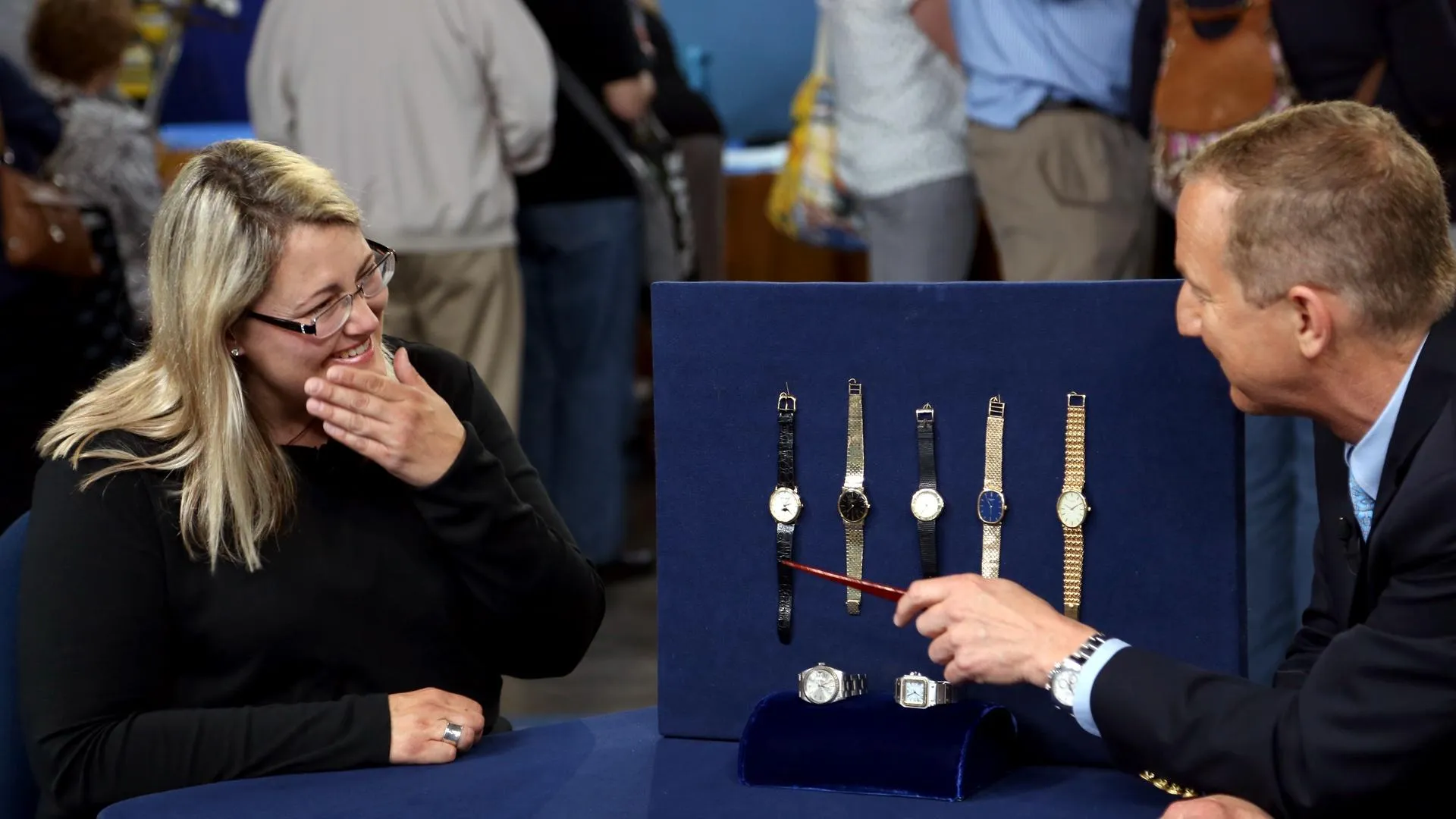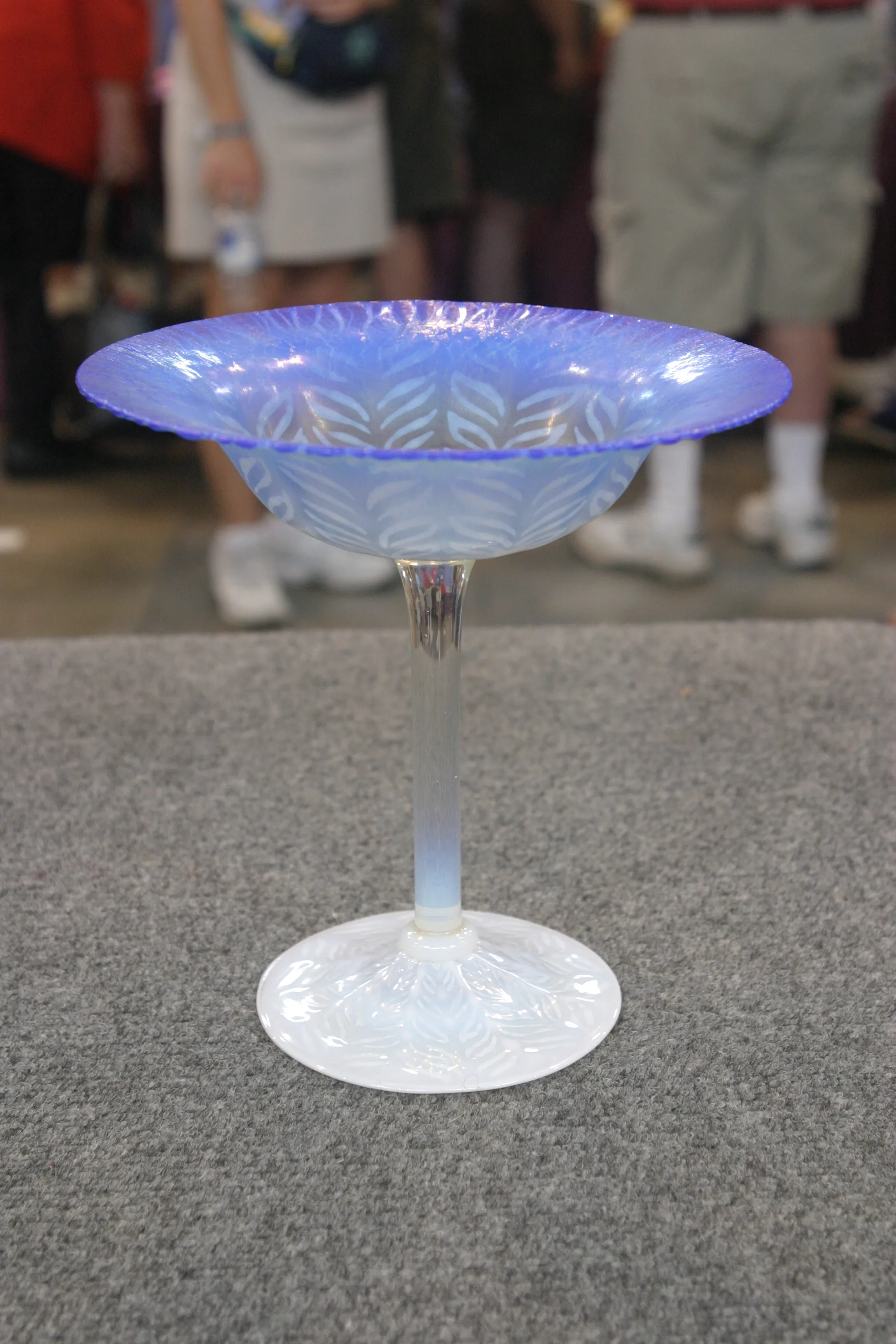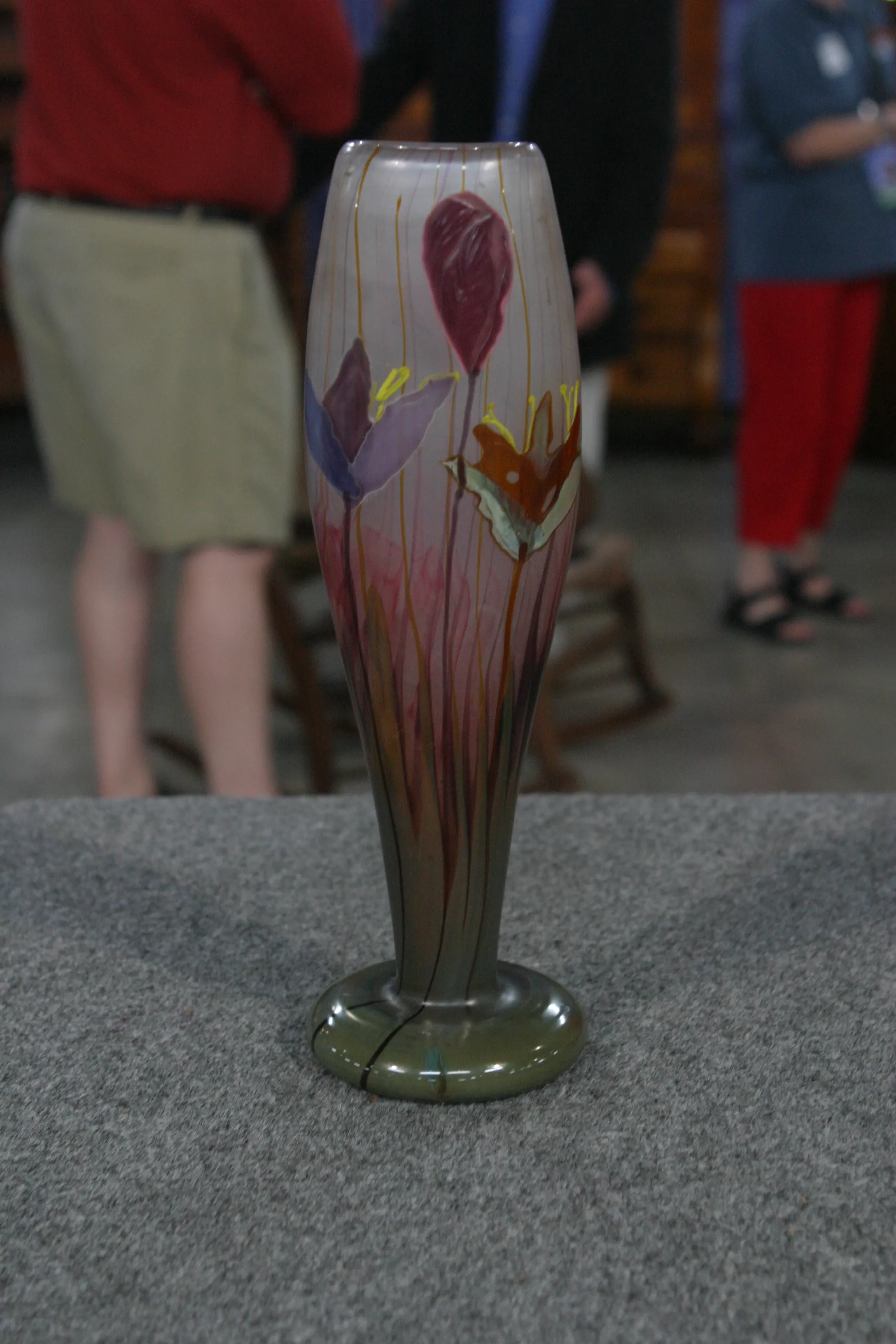GUEST: My father was a carpenter. He did a lot of house restorations back in Toledo. He brought the shade home, he took it upstairs in our attic, and it stayed there, I would say, for at least 30 years. Going through the attic, and we pulled it out, we didn't know much about it at the time, we took it to our house, we wanted to use it, and it stayed in our living room ever since. We just took it down. One day, my wife was sitting in the living room and we didn't know if there was any markings on it-- we had looked-- and she looked up and she saw it was a Tiffany Studio New York on it, or on the rim, and she just went, "Whoo!"
APPRAISER: You're right, this is a Tiffany Studios hanging shade. Do you know what the pattern's called?
GUEST: I believe it's an acorn.
APPRAISER: Well, this is my big moment because when Tiffany made this shade, this was called the vine border. And you see the lovely little leaves on the vines?
GUEST: Yes.
APPRAISER: Now, they do look like acorns, I agree with you, and if you talk to probably anybody who handles Tiffany, they're going to call this "the acorn." But it's a vine. But I know it's a vine border, and if you look in the original catalogs, you will never find the word "acorn" associated with this particular pattern.
GUEST: All right.
APPRAISER: I would date this circa 1906. This came in a variety of sizes and shapes and colors, and actually, it's very appealing to people who want a hanging shade, they don't want a very vibrantly colored one or flowers. It might go with an Arts and Crafts interior, it might go with a modern interior. First of all, this is the kind of shade during this economy that the price has been a little unstable for a number of reasons. One, there were a lot of these made, and I mean a lot. The other reason is that it was on the lower end of things, and the lower end in this particular market has really suffered. The other thing is that you don't have the original fixture. If this were to sell without the original fixture, just like this, it would cost in the neighborhood of $10,000. That would be a retail value on the shade.
GUEST: Okay.
APPRAISER: What's interesting is you could go out and find the hardware, and when you do find it, it could cost in the neighborhood of maybe $2,000, $2,500, but it's not the easiest thing to do, and it is a premium in the marketplace. But if you were to get the original hardware and you did put it on the lamp, this would be worth between $15,000 and $20,000. With the hardware. If you could get the original hardware. It's that important and that unusual.
GUEST: Good, good.









